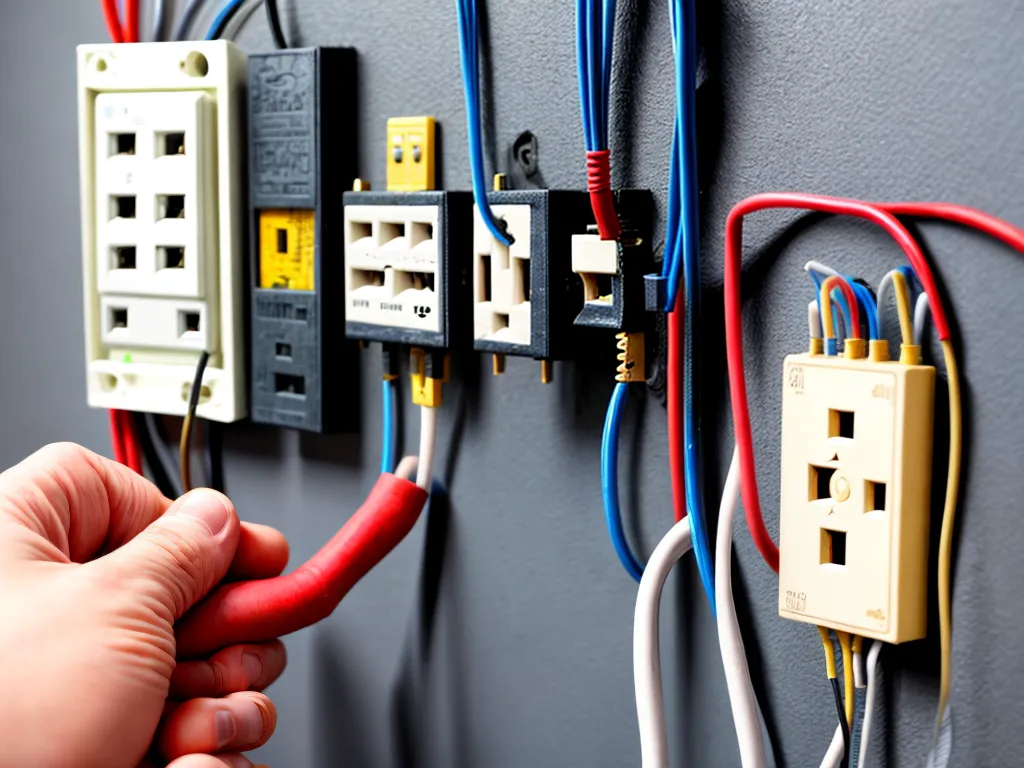
I've decided to take on the task of wiring my home without hiring a professional electrician. This is a big project that requires careful planning, attention to safety, and methodical execution. Here is my guide to wiring a house on your own from start to finish.
Understanding Electrical Basics
Before I start any electrical work, I need to understand some fundamentals about electricity and how it works in a home. Here are the key concepts I've studied:
- Current - The flow of electrons through a conductor like a wire. Measured in amps.
- Voltage - The electrical potential difference that causes current to flow. Measured in volts.
- Wattage - The rate at which electricity is consumed. Measured in watts.
- Circuits - A closed loop allowing current to flow from the power source and back.
- Grounding - Safely directing any stray electrical current into the earth.
I've also learned about the differences between alternating current (AC) and direct current (DC). Home electrical systems run on 120V AC power.
Gathering the Right Tools and Materials
Wiring a house requires having the proper tools for the job. Through my research, I've determined that these tools are essential:
- Voltage tester - To safely check for live wires
- Wire strippers - For stripping insulation off wires
- Needle-nose pliers - For bending and shaping wires
- Electrical tape - For insulating wires
- Cable stapler - For securing cables
In addition to tools, I'll need sufficient wiring and electrical boxes to run new circuits. Here's what I have purchased:
- NM-B wire - The standard copper building wire
- Electrical boxes - For housing connections and fixtures
- Conduit - For protecting wires going underground
I also have screws, wire nuts, hooks, clamps, and other miscellaneous items.
Planning the Wiring Layout
Before getting into the actual wiring work, I need to plan out exactly what circuits I want installed and where they will run. Here is my process:
- Make a floor plan indicating all outlets, switches, and fixtures
- Decide on appropriate circuit layouts and breaker sizes
- Map routes from the electrical panel to all devices
- Plan for any special wiring like 3-way switches or 240V circuits
Careful planning will ensure all my new wiring is organized, efficient, and sufficient for my electrical needs. I don't want to finish the job and realize I missed something!
Running and Securing the Wires
Now it's time to start the actual hands-on electrical work. Here are the steps I take for running each new circuit in my home:
- Turn off main breaker and verify power is off
- Carefully drill holes to run wires between floors and into boxes
- Anchor cables with staples every 1-2 feet along runs
- Leave excess wire at boxes so connections can be made easily
- Label wires indicating their purpose using tags or tape
- Check work frequently to avoid mistakes and potential hazards
I make sure to only work on one circuit at a time to avoid confusion. And I double check for existing wires and obstructions before drilling. Safety first!
Making Safe and Secure Connections
Connecting up all the new wires is when my new circuits will finally become active and functional. I take care to:
- Use wire nuts or other connectors properly rated for the wire size
- Wrap connections clockwise to avoid loosening
- Secure wires snugly so no bare copper shows
- Insulate connections with electrical tape as needed
- Organize wires neatly inside boxes using hooks or tie downs
- Attach wires securely to devices like switches and receptacles
All connections must be tight and insulated to prevent dangerous shorts. I avoid DIY tricks like twisting wires together without proper connectors.
Testing and Troubleshooting Wiring Issues
After completing a circuit, I thoroughly test my work to catch any mistakes. My process is:
- Check for continuity between hot, neutral, and ground wires
- Verify correct polarity and grounding using a multimeter
- Inspect for any loose connections or exposed conductors
- Test GFCI and AFCI outlets and breakers using the test buttons
- Turn on power and check for functionality at fixtures and devices
- Verify proper voltage and amperage draw under load
If I encounter any problems like dead outlets or flickering lights, I methodically isolate the issue and fix it. Safety remains paramount when testing.
Completing the Job and Seeing Results
Once all my new circuits check out, I can officially complete the DIY home wiring job. The last steps are:
- Permanently mount fixtures, outlets, and switches
- Secure cover plates to all boxes to protect wiring
- Update the home's wiring diagram noting new circuits
- Flip the main breaker back on and verify normal power operation
- Addlabels to breakers indicating what they control
- Celebrate never having to wire my home again!
When I enjoy the convenience and functionality of the new lighting, outlets, and switches throughout my house, all the hard work will feel worth it. I'll bask in the satisfaction of wiring my home with my own hands.
So in summary, with careful planning, attention to detail, adherence to electrical codes, and focus on safety, it is possible for a dedicated DIYer to successfully wire an entire home without professional help. Just take it slow and get help if you feel unsure. But with prudence and diligence, you can wire like an electrician!